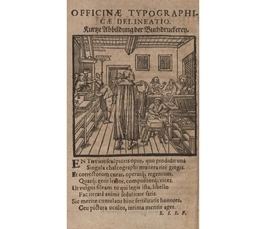Jour Fixe: ‘Obstructive Collaboration’ – Rulers, Printers, and the Publication of Ordinances in the 16th Century
Jour Fixe
- Date: Dec 12, 2016
- Time: 12:00 PM - 01:00 PM (Local Time Germany)
- Speaker: Saskia Limbach
- University of St Andrews
- Opponent: Manuela Bragagnolo, MPIeR
- Location: MPIeR
- Room: Z 01
